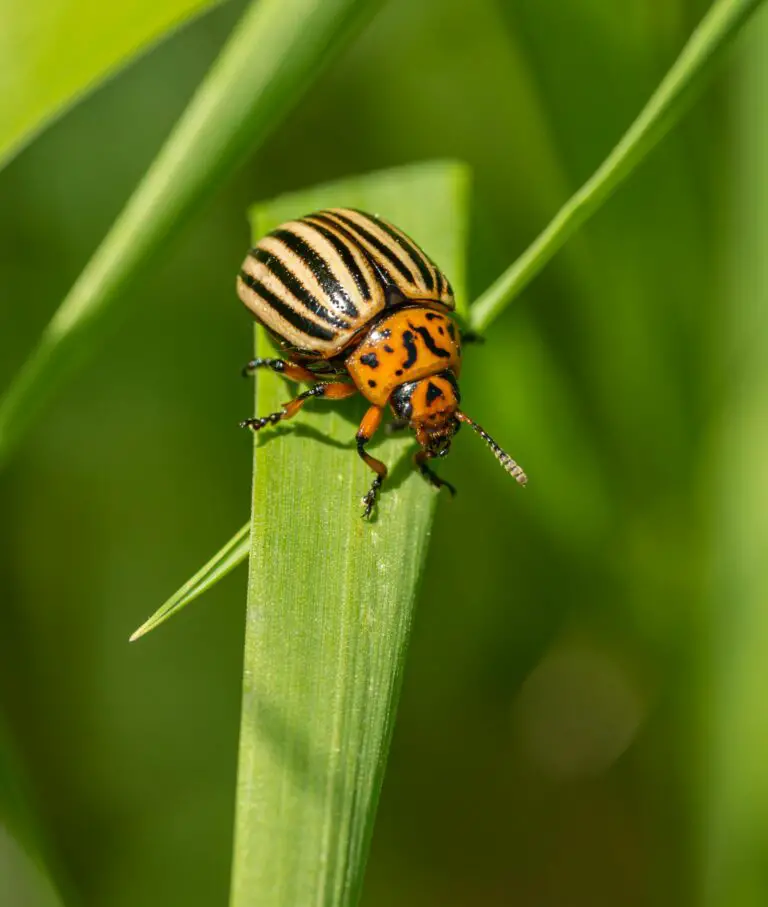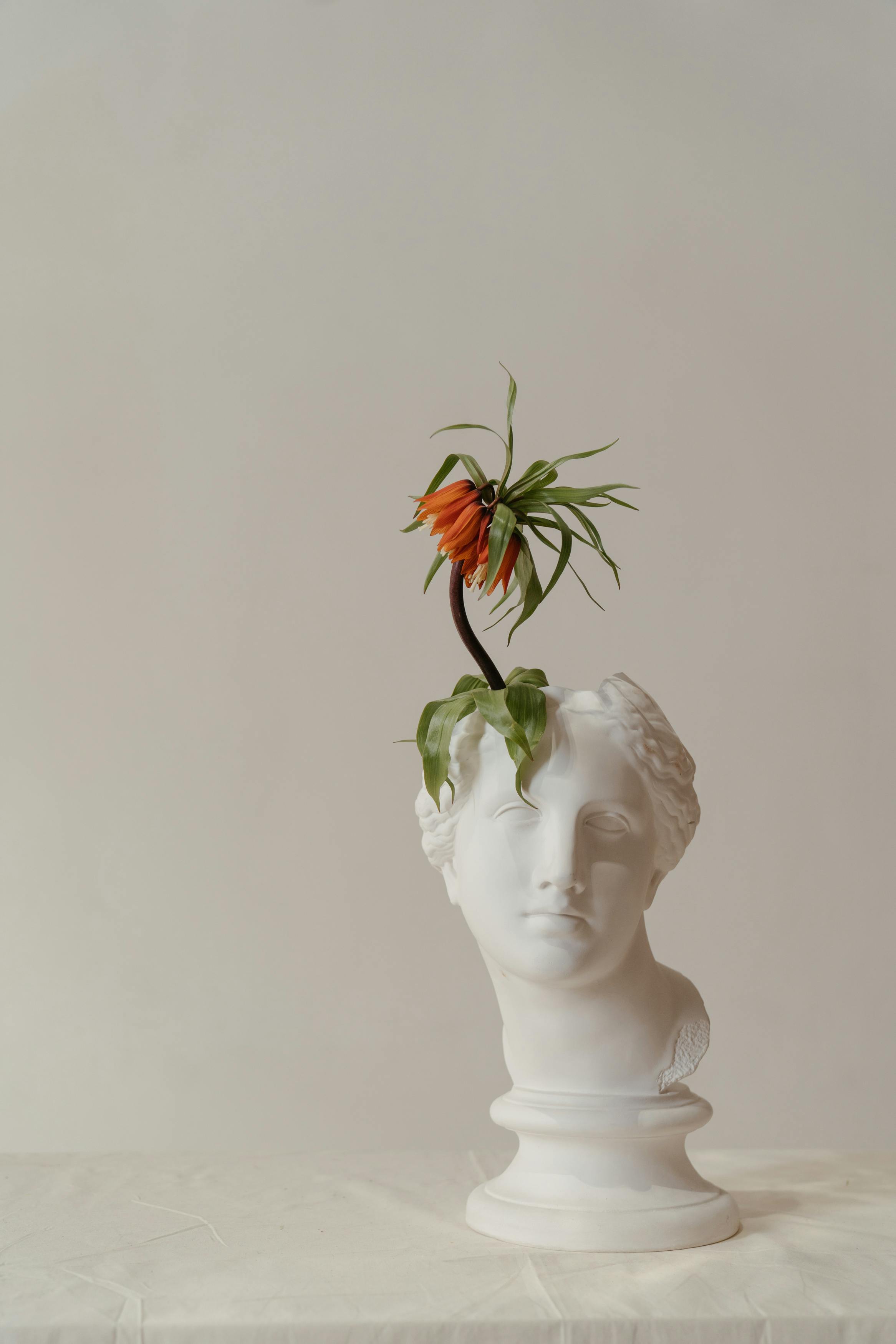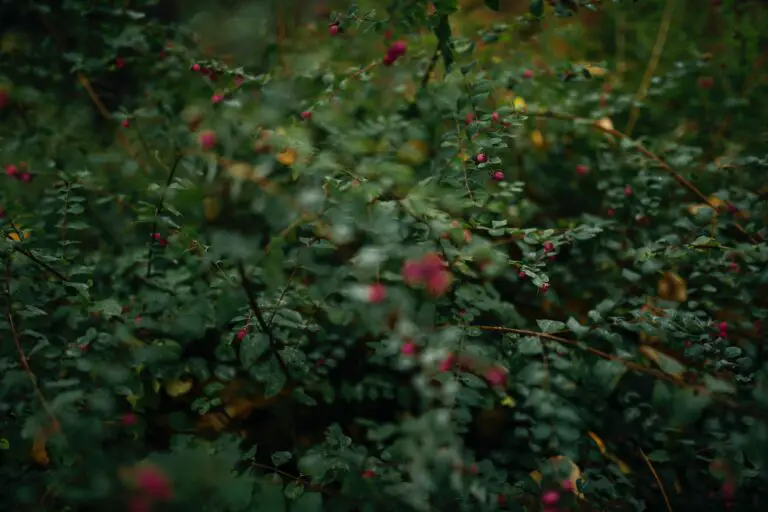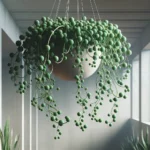Unveiling the Senecio Plant: An Introduction
Embarking on the journey to understand and appreciate the Senecio species is like unlocking a treasure chest of botanical wonders. Found in an array of environments right from rocky slopes to coastal sands, Senecio plants have carved out a niche in the vast world of horticulture. These resilient pioneers claim their space in the natural world, thriving in places that range from the sunny terrains of South Africa to the rugged landscapes of the Andes.
Imagine walking through a garden and stumbling upon the captivating sight of Senecio in full bloom, with its striking foliage dancing in the breeze—this genus is nothing short of a visual masterpiece. Its allure is not merely skin deep; the versatility of Senecio extends to its use in gardens and as stunning, long-lasting elements in home décor. There’s a sense of charm in the juxtaposition of its soft appearance against its hearty nature, enabling it to withstand a variety of environments.
Whether it’s the silvery, soft-to-the-touch leaves of the Senecio cineraria, or the iconic cascading strings of the Senecio rowleyanus, popularly known as String of Pearls, each species brings a unique aspect to the table. This adaptability makes Senecio an excellent choice for gardeners looking to introduce a touch of the exotic, or those seeking to add texture and flow to their interior spaces.
Gardening enthusiasts admire these plants for their minimal care requirements and their ability to add a splash of color year-round. They have become a go-to for creating lively compositions in container gardens, serving as a testament to their growing popularity among contemporary plant lovers. For insights into how these remarkable plants can be nurtured, one might dive into resources such as the detailed guidelines provided by experts in the field. By understanding how to cultivate and care for Senecio, you too can witness their graceful transformation.
Here is a glimpse of the understated elegance these plants can bring to any setting:

As we continue our exploration, let’s delve deeper into the fascinating dimensions of the Senecio plant, where every leaf tells a story, and every blossom is a chapter in its vibrant history. We’ll uncover the methodologies that empower these plants to flourish, providing practical advice to help your Senecio thrive. Stay tuned as we delve into the essence of why cultivating these gems offers more than just an aesthetic advantage—it’s a venture into the ever-enchanting world of plants.
Diverse Senecio Varieties: A Spectrum of Choices
Embark on a botanical journey with the diverse varieties of the Senecio family. These plants aren’t your typical greenery; they are absolute showstoppers in the succulent world. Spotlighting crowd favorites such as the whimsical String of Pearls (Senecio rowleyanus) and the glaucous-leaved Senecio mandraliscae, it is evident how this genus thrives on variety. Their appeal stretches from the peculiar shapes and textures of their foliage to the ease of care and resilience they boast.

Imagine a cascading waterfall of pea-shaped leaves, delicate and detailed. That’s the String of Pearls. It’s a stunner in hanging baskets, adding a touch of nature’s playfulness to any interior space. Then pivot to Senecio mandraliscae, with its lance-shaped blue leaves, mirroring the hues of the ocean, offering a serene and calming presence, akin to a seaside escape. The versatility of Senecio allows you to dip your toes into different aesthetics, be it tropical, desert, or modern chic.
Digging deeper into their origins, the Senecios paint a picture of adaptability. From the arid plains of Africa to the sunny coasts of the Mediterranean, this genus has a fascinating story of evolution. To further explore the world of succulents and cultivate a green thumb, dive into the enriching resources available on our site. Here, the passionate gardener can unfold the secrets of this remarkable plant family and so much more.
The Ideal Conditions: Senecio Plant Care 101
If you’re aspiring to be the proud parent of a thriving Senecio plant, you’ve stumbled across the perfect playbook. Let’s dive into the essentials of nurturing these beauties, where every bit of care coaxes them closer to their lush potential!
Soil Preferences: Just like a gourmet meal tickles our palates, a Senecio savors a well-draining soil mix. Picture the arid homelands of these succulents—your mission is to recreate that with a sandy or gritty soil composition. Chuck the concern for nutrient-rich loam; these plants flourish in the humble embrace of a cactus mix or soil with added perlite.

Watering Routines: It’s all about moderation under this roof! Imagine giving your Senecio a “sip and wait”—soak the soil and then let it dry out completely before another water rendezvous. Remember, the ‘drought-joy’ nature of these succulents. Overzealous watering? That’s where you pull the emergency brake. Keep the hose at bay, and you’ll be golden.
Light Requirements: Shine a light on success by giving your Senecio the sun-kissed spot it yearns for. You’ll want to offer a full sun to partial shade scenario, akin to the dappled light slipping through an oasis’s canopy. Turn away from the dark side of low-light conditions unless you fancy a plant with the doldrums.
Fertilization Practices: When spring has sprung, it’s time for a little pep talk in the form of fertilization. Opt for a half-strength, balanced succulent fertilizer to give your Senecio that extra gusto. You’ll want to do this sporadically— just a few times in the growing season is plenty to stoke those lush leaves into existence.
While pampering your Senecio, why not explore the fascinating world of succulent care further? You’ll find a treasure trove of know-how that accentuates your green thumb, expanding your repertoire beyond these charismatic charmers.
Pruning and Propagation: Multiplying Your Senecio Collection
If you’re looking to enhance your indoor jungle or desert garden, learning the art of grooming and expanding your Senecio collection becomes an adventure. These little green friends not only add a dash of whimsy but also purify the air and bring life to any space. Let’s dive into the gratifying process of pruning and propagating Senecio plants, which is not only practical—it’s downright fun!
Pruning: A Snip Here, a Clip There
First things first: why prune your Senecio? Much like getting a haircut to encourage healthier, fuller hair, pruning Senecio plants promotes more vigorous growth and maintains the plant’s ideal shape. While it might seem counterintuitive, cutting back overgrown stems or picking out the occasional yellow leaf can result in a lusher, happier plant. Think of it this way: each snip is a signal to your plant to grow new, robust stems.
Picture this: a lush, trailing Senecio, cascading like a botanical waterfall from its perch—magical, right? Achieving this look is simpler than you might think. Trim the stems just above a leaf node, and your plant will branch out, becoming denser and more vibrant. It’s exactly what we did with the Senecio in the cozy reading nook at our local community center, and the compliments haven’t stopped coming!
Propagation: Nature’s Gift That Keeps on Giving
Now, the glorious part about Senecios? Propagation. This is where you roll up your sleeves and play the role of nature’s apprentice. The process is straightforward: choose a healthy stem, make a clean cut, and let the cutting callous over for a few days in a dry, warm spot. Soon after, nestle your little hopeful into well-draining soil, offer some gentle encouragement (and water), and watch as it takes on a life of its own.
It’s like the time we propagated cuttings for a community garden project; witnessing those tiny tendrils emerge and anchor themselves was nothing short of a miracle. And the best part? You can experience this joy over and over again with very little investment. If you need a visual guide, this video perfectly captures the joyous essence of bringing a new Senecio cutting to life.
Practice this cycle of pruning and propagation, and not only will you have a flourishing Senecio plant, but you’ll also have an ever-expanding collection to share with friends and fellow plant lovers. Whether it’s for a swap meet or simply to spread the green love, your Senecio offspring can bring a little piece of your garden to others. Each cutting, each new plant, carries with it your care and passion, branching out into the world to spread beauty and tranquility.
Remember, with a little patience and some basic techniques, your Senecio plants can become the crowning jewels of your plant assortment. So go ahead, give those stems a little snip, and prepare for the magic that follows. Who knows, your living room might just be the next green sanctuary everyone is talking about!
Pest Prevention and Disease Management for Senecio
When it comes to raising a flourishing Senecio, the adage “an ounce of prevention is worth a pound of cure” could not be more apt. Imagine vividly – you’ve nurtured your Senecio plant with the utmost care, only to spot a cluster of unwelcome pests setting up shop under the leaves. It’s the horror story no plant parent ever wants to face. But fear not! Let’s talk tactics to shield your leafy friend from such nightmarish scenarios.
First things first, the usual suspects: aphids, spider mites, and mealybugs. These tiny critters are the bane of plant enthusiasts everywhere. They’re like the unwelcome guests at a garden party, except they suck the life out of your plants, quite literally. Regular inspection is your first line of defense. Peer closely at your Senecio’s foliage; if you notice any freeloading pests, take action immediately. A strong stream of water can dislodge these miniature marauders, while insecticidal soap sprays can be the proverbial bouncer, showing them the exit.

For those who prefer walking the natural path, there’s a battalion of organic warriors at your disposal. Introducing ladybugs and lacewings into your garden isn’t just for children’s picture books. These natural predators feast on the very pests that plague your Senecio. It’s like hosting a banquet where the pests are the main course. Plus, these beneficial insects give your space a dash of living wonder.
Now, what if your Senecio starts showing signs of a mysterious ailment? Leaves turning as yellow as the sun or wilting without reason – it’s like a scene from a plant thriller, and you’re the detective. Fungal infections and root rot could be the culprits behind such distressing symptoms. How to crack the case? Start with proper spacing and airflow around your plants; crowded Senecios are like packed elevators, perfect breeding grounds for disease. And make sure your watering habits don’t contribute to the problem. Overly moist soil is a fungus’s dream home.
If all else fails, remember that it’s okay to perform a little “surgery” on your Senecio. Removing infected parts of the plant is like cutting away the bad to save the good. It may seem drastic, but sometimes it’s necessary to ensure your Senecio comes back stronger, ready to face another day in your carefully curated garden oasis.
Senecio Plant Potting Guide: Ensuring Adequate Drainage
Welcome, green thumbs and foliage enthusiasts! As you delve into the world of Senecio plants, you may find yourself facing a plethora of potting choices. But fear not, for picking the perfect pot isn’t just a matter of aesthetics—it’s a pivotal decision in safeguarding your verdant buddy’s vigor. Let’s unearth the secrets to selecting the right home for your Senecio and delve into the nitty-gritty of drainage dynamics.
Imagine for a moment, your Senecio plant as a high-flying trapeze artist. The pot and drainage system are akin to the safety net below, poised to catch excess water and provide a swift escape route. Selecting a pot without proper drainage is like removing that safety net—playing a risky game with your plant’s health.
It’s all about balance. Your mission, should you choose to repot your Senecio, is to find a vessel that promotes adequate drainage without letting your fertile soil escape. Cue the right potting mix—a concoction that retains sufficient moisture for root hydration yet porous enough to bid farewell to excess water, thus averting the dreaded root rot.
Let’s dissect this further. Ideal pots for your Senecio plant would be ones with drainage holes aplenty. Think of them as the exit points in a bustling theater—without enough exits, patrons (or in this case, water) will struggle to leave, creating a logjam detrimental to your plant’s wellbeing.

Don’t be fooled; even a pot with holes can lead to standing water at the bottom if the soil is too dense. That’s why a specialized potting mix for succulents and cacti, with ingredients such as perlite or coarse sand, becomes your sidekick in this quest. It loosens the soil structure, allowing water to cascade through like a refreshing mountain spring.
Take Mary’s story, for instance. She paired her Senecio with a sleek terracotta pot and a blend of soil that made water retention a thing of the past. Now her plant stands tall, free from the perils of overwatering, thanks to her shrewd selection. Emulate Mary, and your Senecio will not just survive—it will thrive!
Remember, the pot is your Senecio’s abode, its sanctuary. Choosing wisely not only enhances the aesthetic appeal but forms a vital part of your garden’s ecosystem. Do right by your Senecio, and you’ll be rewarded with a flourishing, happy plant that is as resilient as it is radiant.
Styling Your Space with Senecio: Decorative Tips and Tricks
Senecio plants, with their bewitching cascades and lush textures, offer a treasure trove of possibilities for home and garden decorators. It’s not just about plopping a potted plant on a windowsill; it’s about weaving greenery into your living spaces in ways that are as visually stunning as they are sustainable.
Indoor Elegance with Hanging Baskets
Imagine walking into a room where delicate Strings of Pearls (Senecio rowleyanus) dangle from the ceiling, creating a living curtain that separates spaces with grace and innovation. These Senecio plants in hanging baskets can transform the ambiance of any room, offering a piece of nature’s serenity amid urban decor.
Liven Up Your Bookshelves
Why should books have all the fun? Infuse life onto your bookshelves with small Senecio plants peeping out between literature and knick-knacks. They add a pop of color and a breath of fresh air, literally, as they contribute to a healthier indoor atmosphere.
The Ultimate Patio Conversation Starter
Out on the patio, a container garden of different Senecio species becomes a focal point for guests. Each plant tells its own story through its unique leaves and growth habits, sparking up conversations about the wonders of plant life.
Green Artwork: Living Walls
Senecios are not just for pots. Why not install a living wall that doubles as art? Senecio articulatus, with its fascinating jointed stems, can create texture and depth in a vertical garden that captivates and charms all who gaze upon it.
Video Inspiration
Seeking a visual guide to get started? Dive into this video featuring the String of Pearls plant and watch as it reveals the ultimate tips for incorporating these beauties into your own space.
Finally, imagine your garden paths edged with the low-growing Blue Chalksticks (Senecio serpens), their bluish hues providing a surreal contrast against the greens of a lawn. It’s all about perspective and creativity when it comes to landscaping with Senecio.
Understanding Senecio Toxicity: Safety in Handling
If you’re mesmerized by the eclectic foliage and striking variety of the Senecio plant, you’re not alone. These captivating succulents can be a dazzling addition to your indoor garden or outdoor landscape. But before you leap into cultivating these beauties, there’s a crucial aspect you need to consider—their potential toxicity. Certain Senecio species can be less than friendly to your furry companions and even your family if not handled with care.
Let’s dive into the world of Senecio plants and unravel the mystery behind their toxicity. Imagine this: you’ve brought home a gorgeous Senecio plant, placed it at the center of your living room, and your playful kitty decides it’s a snack. This might seem innocent, but it hides a perilous possibility. Senecio plants contain pyrrolizidine alkaloids, substances that—in significant quantities—can cause liver damage. This doesn’t mean you need to banish these plants from your life, but crafting a strategy for safe handling and placement is key.
Consider real-life scenarios like your trusty canine digging up your garden. If that place is populated by Senecio plants, it might translate into an emergency vet visit. Another instance could be curious toddlers exploring with their mouths, which could lead to an accidental ingestion. Such incidents serve as a reminder that while these plants are visually stunning, they demand respect and awareness for their toxic traits.

What’s the action plan, then? Firstly, knowledge is power. Identifying your Senecio variety and understanding its specific toxicity level is paramount. Once you’ve got that nailed down, employ a best practice of keeping these succulents out of reach. Elevated shelves or hanging planters can be both stylish and safe ways to display these gems without the worry. Additionally, for outdoor Senecios, consider fencing or barriers that define boundaries for pets and children alike.
In conclusion, cultivating a lush Senecio isn’t just about watering schedules and sunlight—it’s about stewarding your space sensibly. When done right, you can enjoy the eclectic charm of the Senecio plant without sacrificing the safety of your loved ones. Handle with insight, and your green sanctuary will thrive, no asterisks attached!
Is Senecio the Right Choice for You? Turning Challenges into Success
Wondering whether the versatile Senecio plant is the right green companion for your home or garden? It’s time to dive into an exploration of what it truly means to cultivate this diverse genus. Senecio spans an array of species, each with its own unique demands—and yes, its share of challenges. But fear not! For green thumbs looking for a rewarding endeavor, the twists and turns of growing Senecios could very well be worth it.

Take, for example, the vibrant Senecio rowleyanus, or String of Pearls, a succulent that captures the eye with its bead-like foliage. While its cascading vines make a striking visual statement, they hint at a need for mindful attention. Adequate lighting, temperate climates, and a watchful eye on watering schedules are just the beginning. But the moment you’ve mastered the balance, the String of Pearls becomes a testament to your gardening prowess—a living sculpture adorning your space.
Then there’s the tall and stately Senecio barbertonicus, standing as a testament to your patience and care. While it can seem daunting to guide these plants to their full towering potential, your dedication doesn’t go unnoticed. When you finally witness its lush, evergreen shrubbery reach for the skies, the sense of achievement is unparalleled. It’s a prime example of how embracing the challenges of Senecio cultivation can lead to spectacular success.
Aspiring gardeners, take note: understanding the micro-environments within your home and garden is key. Senecio plants marinate in the sun’s embrace but recoil at the touch of frost. And while they relish in well-drained soil, they’ll sulk in soggy, waterlogged conditions. If you’re someone who revels in crafting the perfect environment, puzzling through the Senecio’s preferences can be a rewarding game of ecological Tetris. Relish the opportunity to watch as your carefully crafted care translates into exuberant growth.
So, is the Senecio a good fit for you? If you’re one to roll up your sleeves, accept the challenge, and celebrate the victories of a flourishing garden, then yes. These plants may present some puzzles to solve, but in every leaf and tendril, there’s a lesson to be enjoyed. Embrace the journey of nurturing Senecio plants, where each challenge is simply a stepping stone to a luscious, green triumph.
Frequently Asked Questions about Senecio Plants
When it comes to nurturing your leafy friend, the Senecio plant, there’s no such thing as a silly question. Whether you’re a budding green thumb or a seasoned plant whisperer, these are the questions that plant enthusiasts, just like you, are itching to get the answers to!
How often should I water my Senecio?
Imagine you’re in the desert—because that’s where many Senecios feel at home! These drought-tolerant succulents crave water like a rare desert rain. Check the soil’s moisture: if it’s dry a few inches deep, it’s time to water. Typically, this means every 1-2 weeks during active growth and less often in winter. Just remember, when in doubt, drier is better than drown!
What kind of light does my Senecio plant need?
Senecio plants love to bathe in the sun, but they’re not sunbathers looking to get a tan all day long. They prefer bright, indirect sunlight—think of a spot near a window where the sun’s rays aren’t directly hitting them but still provide a well-lit environment. A north or east-facing window could be your plant’s happy place.
Can you give me some tips on propagating Senecio?
Ah, propagation—the plant parent’s rite of passage! With Senecio, it’s like getting avocado from a supermarket—they practically propagate themselves. Snip a healthy stem, let the cut end callous over for a day or two, then nestle it into some well-draining soil. Keep it as lightly moist as a morning dew, and voilà, you’ll have baby Senecios sprouting up in no time.
I’m having trouble with my Senecio. How can I overcome common care challenges?
Is your Senecio tossing and turning at night? Just kidding—but real talk, if your plant is looking sad, it’s usually a cry for help with watering, lighting or soil conditions. If it’s yellowing or mushy, you might be showing too much liquid love. Back off on the watering, and ensure it has drainage fit for a sieve. Leggy and pale? It’s stretching out for more light. Find a brighter spot but dodge the harsh afternoon sun. Keep the soil like a light sponge—moist but never soggy—to keep those Senecio spirits high!
And speaking of top-notch care, why not watch a pro in action? This video is a treasure trove of tips for your String of Pearls—aka Senecio Rowleyanus—a popular member of the Senecio family, lovingly guided by a dedicated plant guru. They’ll show you exactly what it takes for your green buddy to flourish.
Here’s a helpful video that walks you through the ins and outs of caring for your Senecio plant:
Remember, every plant is unique, just like us! By tuning into your plant’s needs, you’ll be on your way to raising a thriving, healthy Senecio. With a bit of love, attention, and the answers to these FAQs under your belt, your Senecio won’t just grow, it’ll glow.



